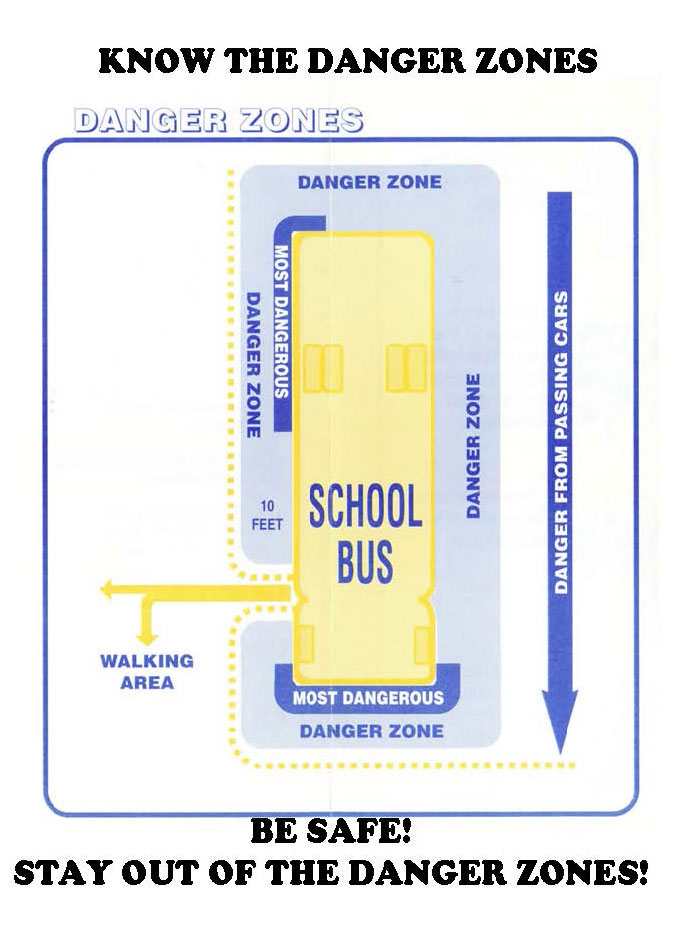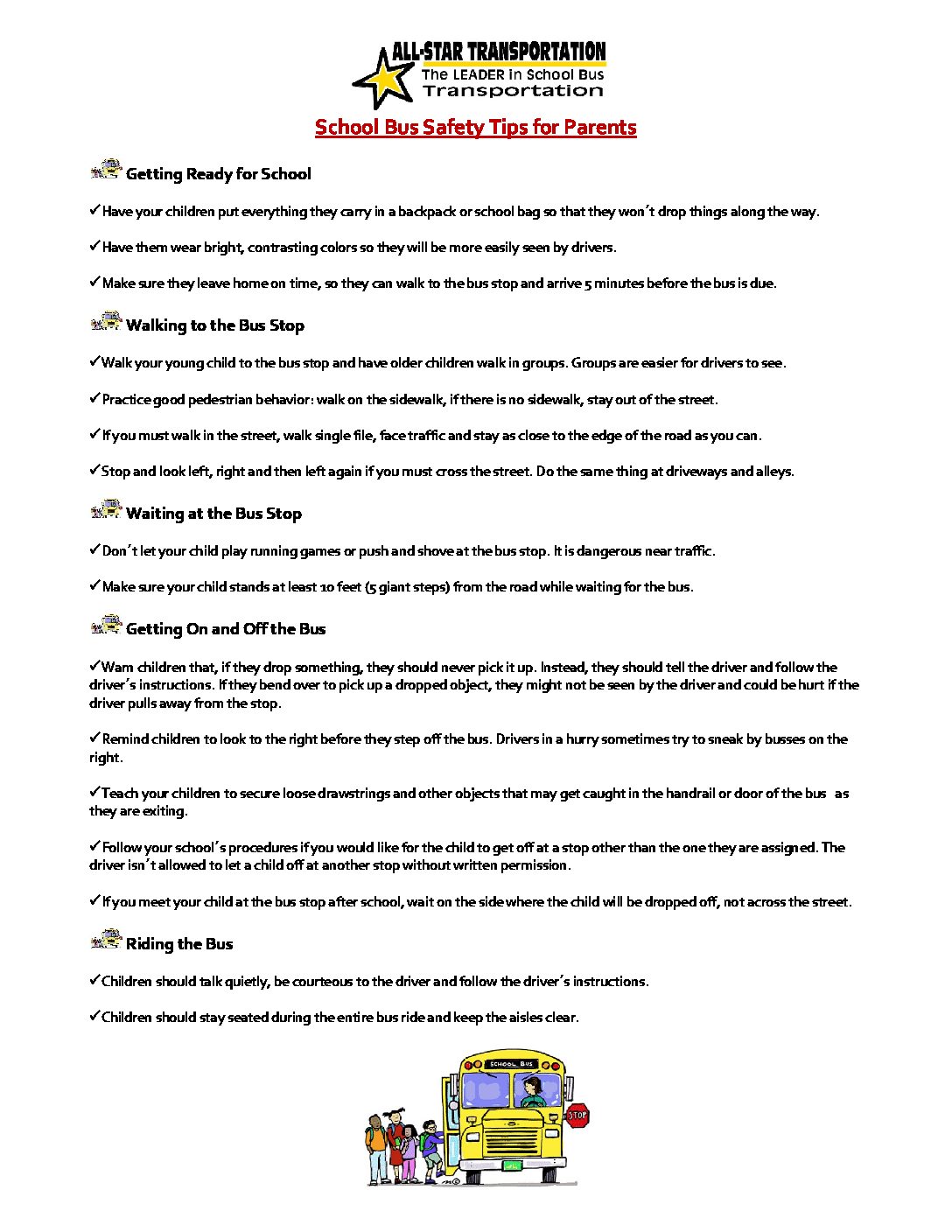Bus Safety
Transportation Safety Complaints
All complaints concerning school transportation safety, including but not limited to accidents at school bus stops, shall be made to the Superintendent's Office through the Director of Business Operations.

Ten Safety Rules
To educate and remind children about practicing bus safety, All - Star Transportation stresses the 10 Rules of School Bus Safety. They are designed to make safety a priority for your children.
All - Star Transportation's 10 Rules of School Bus Safety...
Be at the bus stop early.
Wait for the bus in a safe place -- away from the road.
Take your seat right away.
Stay seated at all times.
Keep hands, arms and head inside the bus at all times.
Listen to the bus driver and follow directions.
Leave the bus carefully using the handrails.
Take 10 giant steps away from the bus.
Look both ways before crossing the road and wait for the driver's signal.
Keep away from the bus if you drop or forget something.
All - Star Transportation also encourages the removal of drawstrings and toggles from children's clothing or backpacks. They can become snagged on school bus handrails or doors and can result in serious injury.
Danger Zones

How to Cross Safely
Avoid the danger zone! Walk ten giant steps beyond the bumper of the bus.
Stop! Wait for the driver's signal.
Check for traffic both ways.
Listen! If the driver blows the horn, go back.
Cross while continuing to check for traffic from both directions.
Walk straight across - not at an angle.
Please do your part to help us keep your children safe while riding the school bus. Review these important safety rules with them.
Seatbelts
The use of seat belts on large school buses is an issue that has been thoroughly studied and debated for many years. Most parents, who insist their children wear seat belts in the family automobile, naturally think their child's school bus should be equipped with seat belts too. Their thinking is, "if my child is safer in our car wearing a seat belt, he or she would be safer wearing a seat belt on their school bus."
Unfortunately, that may not be the case. Studies conducted since 1969 by the national Transportation Safety Board, the National Academy of Sciences, Transport Canada and others have repeatedly concluded that compartmentalization provides better protection to passengers of large school buses than to two-point lap belts.
Compartmentalization, mandated by Federal Motor Vehicle Safety Standards more than 20 years ago, replaced old school bus seating with strong, well-anchored, closely spaced, high-backed seats - padded both front and back. There are far different from the metal hand bars, waffled metal seat backs and exposed rivets most parents faced when they rode the school bus.
Some have likened compartmentalization to an egg crate - the children, like the eggs, will move in a confined space but are generally protected from impacts by padded seating and construction. Statistics prove that school buses are about thirty times safer than traveling in a passenger car.
Seat belts on large buses often raise many other questions:
With behavior on the bus a major challenge for many drivers, will unruly children use the seat belt and its buckle as an additional weapon?
With virtually no way to mount a three-point restraint system, do lap belts alone pose an even greater risk to the children, just as they do in a car?
Who will make sure all children on the bus sometimes as many as 70 or more students have their seat belts fastened?
Should the bus be involved in an accident, who will make sure all of the children get their seat belts off? What if the driver is unable to help because of injury?
These questions, and the studies conducted by experts in the safety field, lead us to agree with the position adopted by the National Association of State Directors of Pupil Transportation Services - "there is no supportable need for safety belts on large school buses."
School bus Safety Tips for Parents
For inquiries or questions concerning bus stops please e-mail: sattazahnj@lpsct.org

